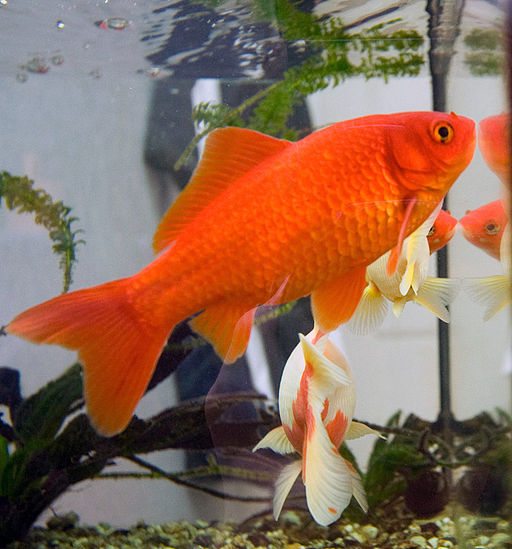
May 6, 2017; Richmond Times-Dispatch
Development directors write thank-you notes to donors for all kinds of non-monetary donations. On any given day, nonprofits across the country are acknowledging donations of all the odds and ends that allow programs to run smoothly. Solicited donations, such as infant formula, wheelchairs, dog food, cameras, laundry detergent, feminine products, and laptops, arrive en masse to grateful nonprofit employees. But what do you do with a donor who gives you…goldfish?
Such was the predicament for the Virginia Museum of Fine Arts four years ago when museum officials noticed some fishy visitors enjoying the art.
The museum publicly acknowledged the anonymous and unsolicited donation in the beginning of 2013 in a series of articles that discussed an unfortunate theft and vandalism that occurred on museum grounds. (A temporary outdoor Chihuly exhibit, Red Reeds, which featured long tubes of red glass was situated around the outdoor perimeter of the Gottwald Reflecting Pool, was vandalized when one of the glass “reeds” was cut and removed.)
Sign up for our free newsletters
Subscribe to NPQ's newsletters to have our top stories delivered directly to your inbox.
By signing up, you agree to our privacy policy and terms of use, and to receive messages from NPQ and our partners.
As for the fish, they settled into museum life and were perhaps even embraced. The museum posted a video of the fish swimming in the reflecting pool, and all appeared well for the uninvited guests until January 2017 when the fish vanished from public view. The absence so concerned Robby Ellerson that the 76-year-old came forward to question museum officials. In the process, he outed himself as the individual who released the fish. Seeing an empty reflecting pool that “needed fish,” the local resident dumped the fish in the pool during a thunderstorm by smuggling them under his sweatshirt and rain gear.
Ellerson is quite proud of his work and noted that the fish brought a great deal of joy to museum visitors. Pressed on the fate of the fish, museum officials announced that a faulty filter in the reflecting pool caused an inhospitable environment. The fish perished, and there were no plans to reintroduce fish into a reflecting pool that was never intended as a proper environment to sustain them.
Upon the announcement, patrons of the institution took to social media, calling the fish “living art” and asking for their return to the pond. Museumgoers like Christopher Leighten enjoyed taking photos of the fish beneath the water’s surface in order to capture the fish and the Chihuly glass installation behind them. Others found the museum’s explanation of the malfunctioning filter incident somewhat suspect but offered no further elaboration.
While experts across the globe have pleaded with the public not to dump goldfish into bodies of water that connect to riverways (where the goldfish decimate native species by introducing diseases and gorging on the eggs of native fish species), the museum might do well to have fun with this golden opportunity and Mr. Ellyson. They could take their cue from Bowling Green’s Corvette museum, which opened the Skydome Sinkhole Experience on the two-year anniversary of an unfortunate natural disaster that swallowed $2 million dollars worth of Corvettes. The video of the tragedy garnered so much attention worldwide that an additional 100,000 visitors pour in to the museum annually.
As for the goldfish, when it comes to the battle of Virginia Museum of Fine Arts vs. the goldfish of the Gottwald Reflecting Pool, the fish appear to be winning the war even if they have lost a few key battles. Just last week, two goldfish were spotted gliding along beneath the surface, suggesting it is the will of the people that they return—with or without the blessing of the museum.—Carrie Collins-Fadell












